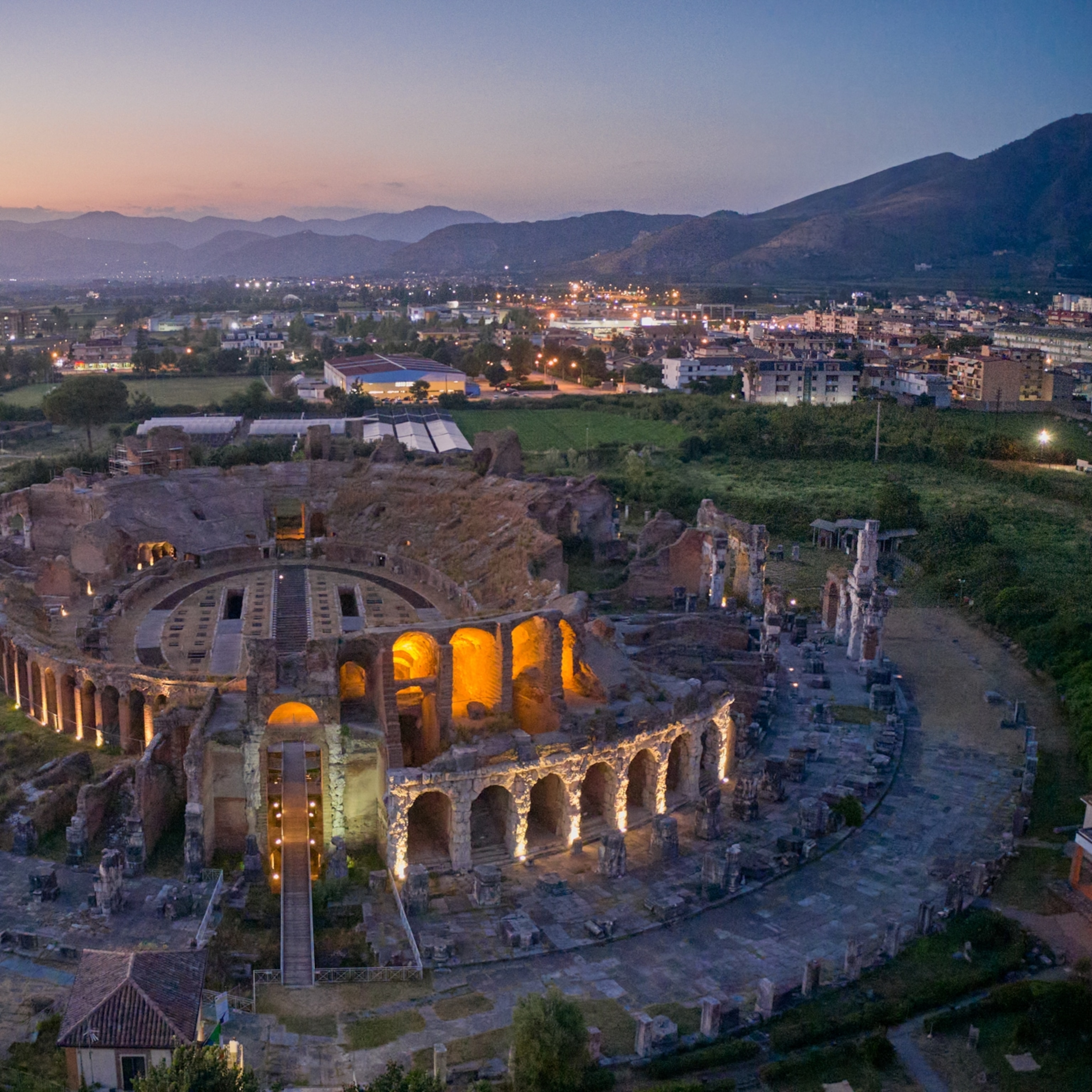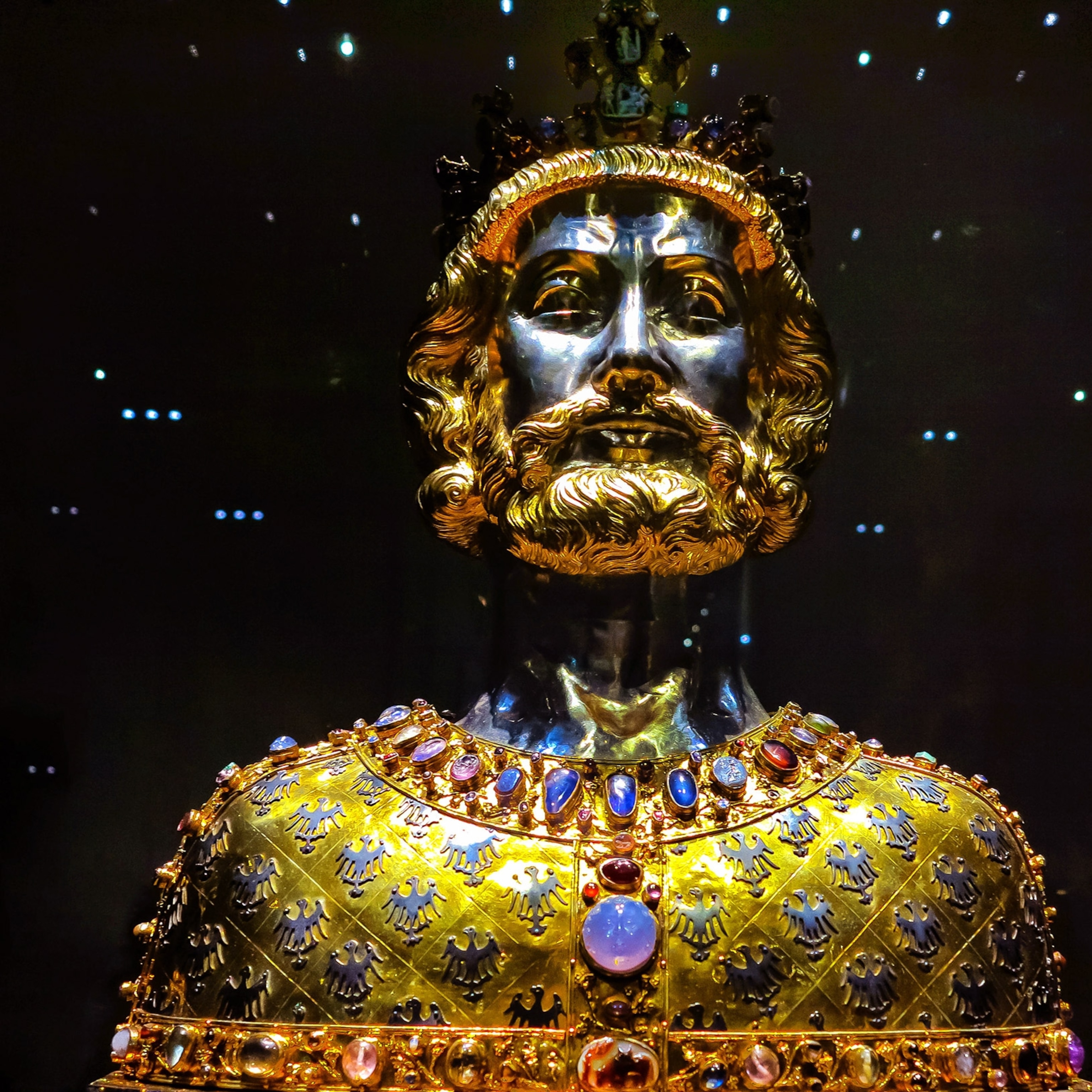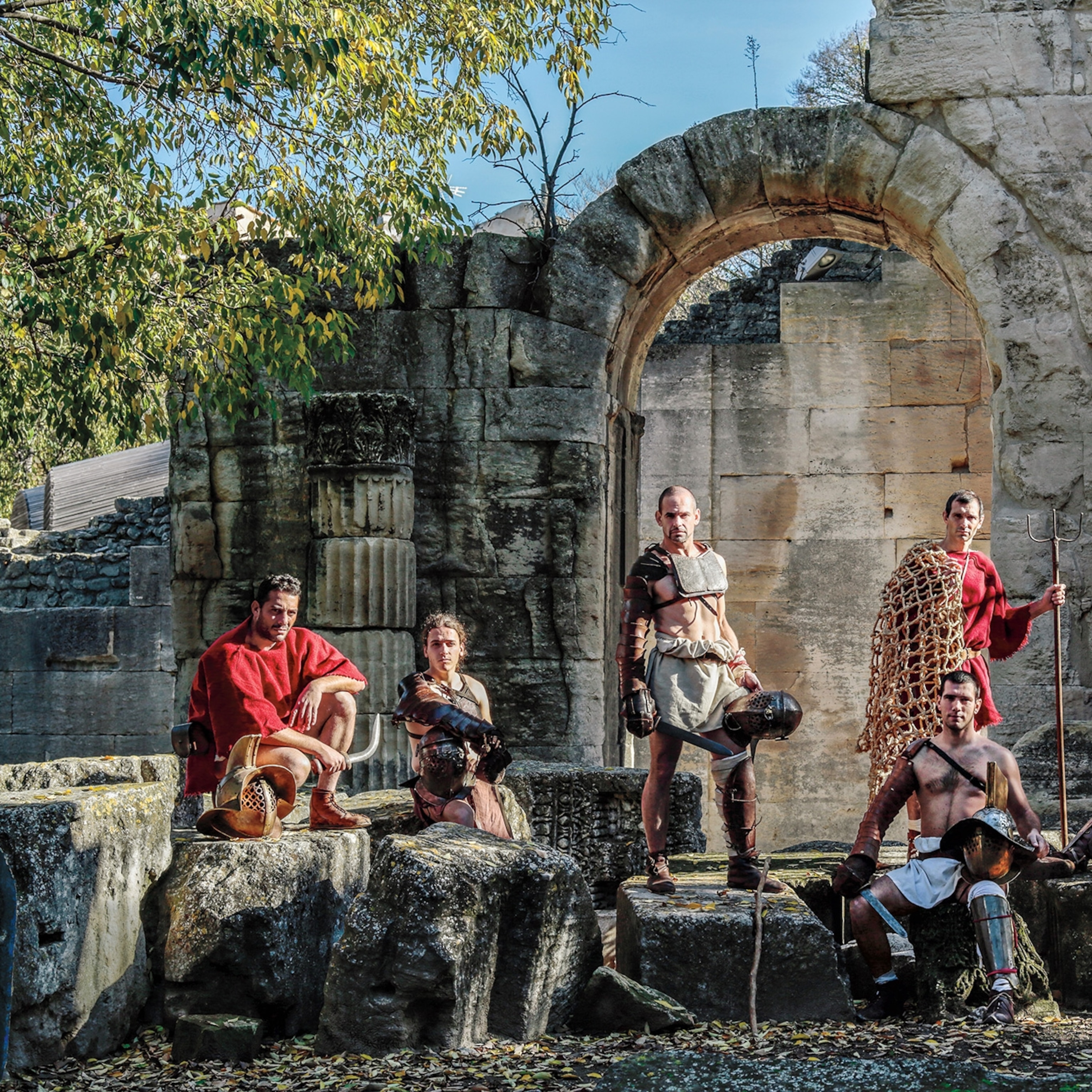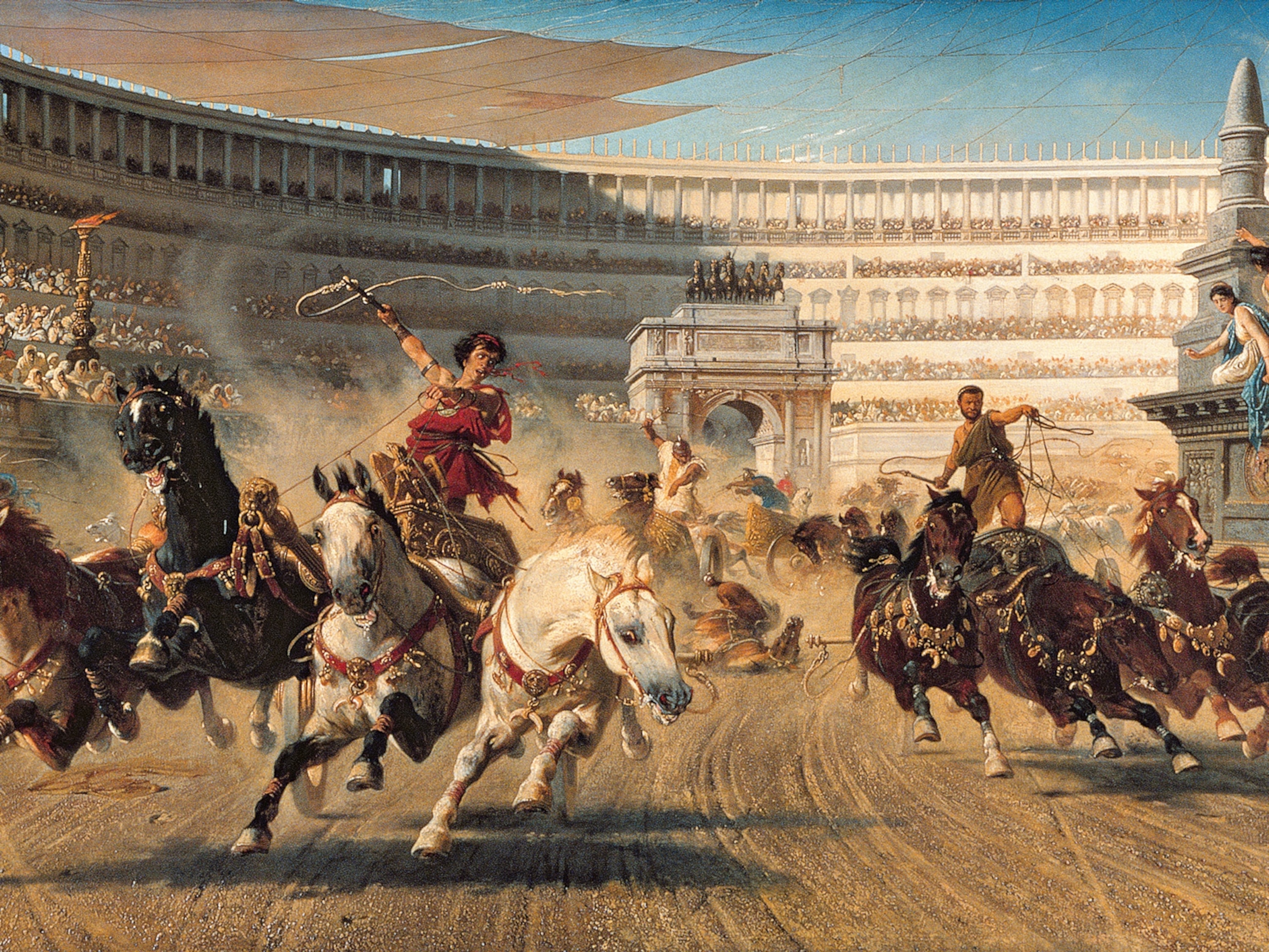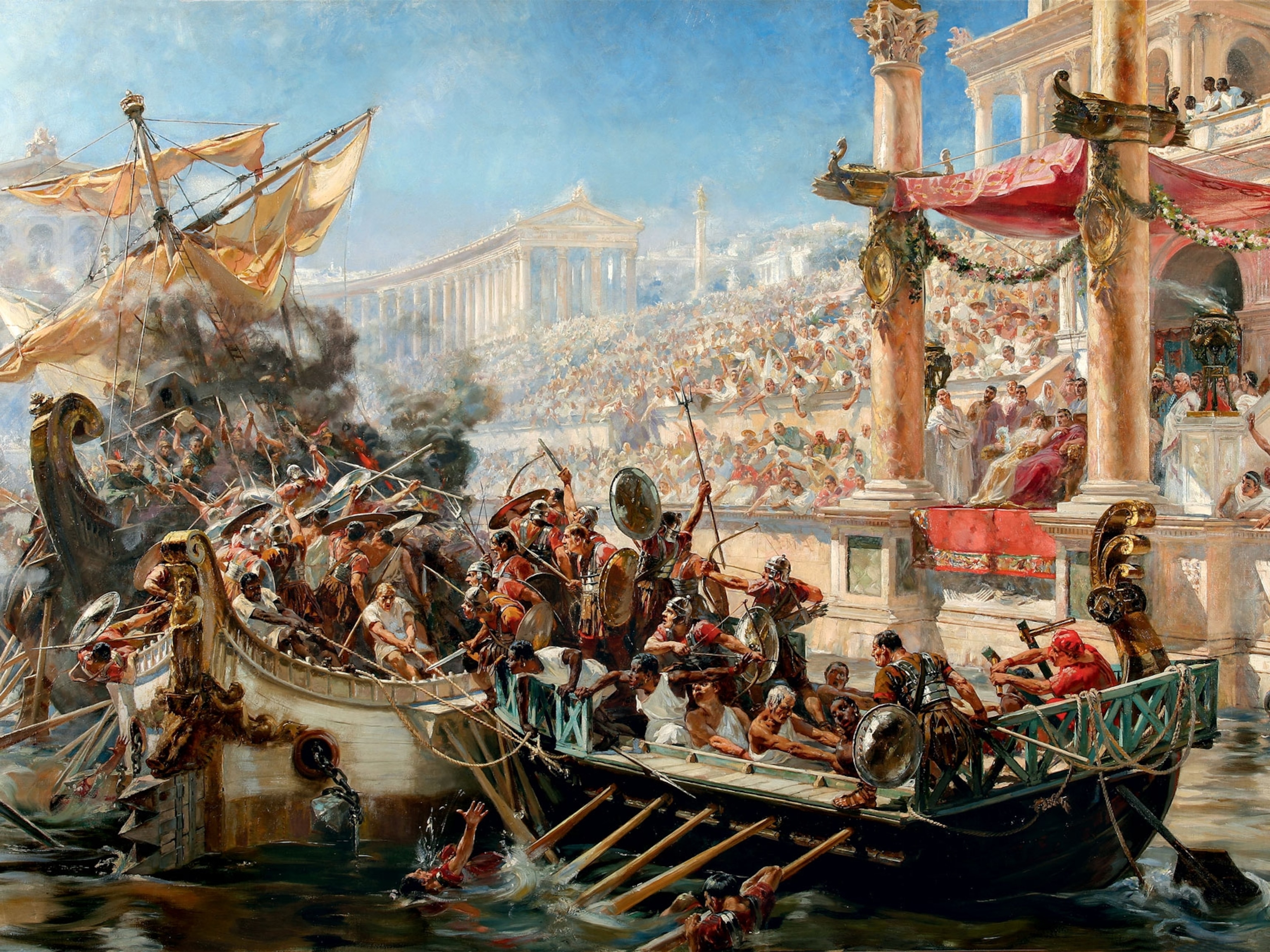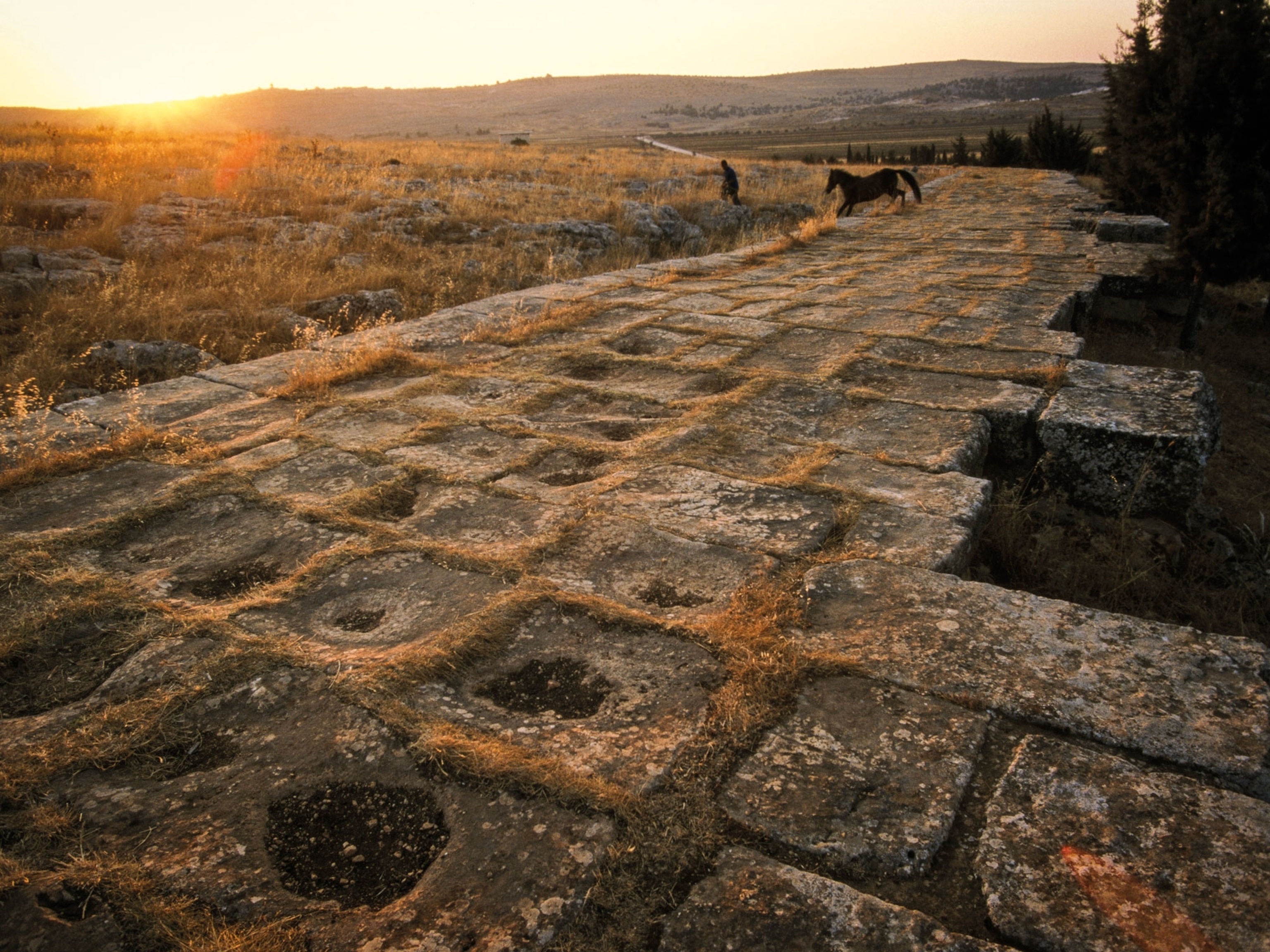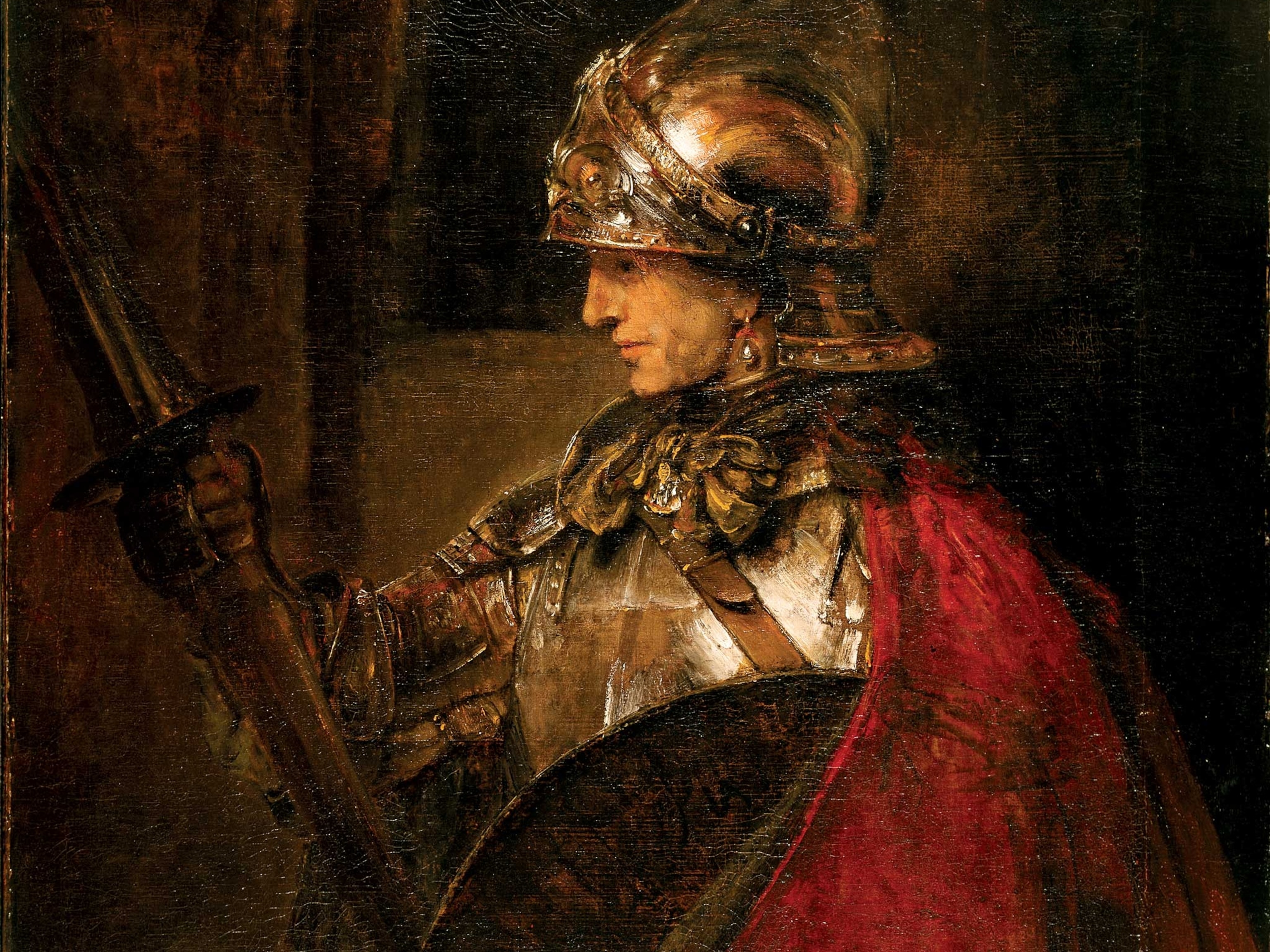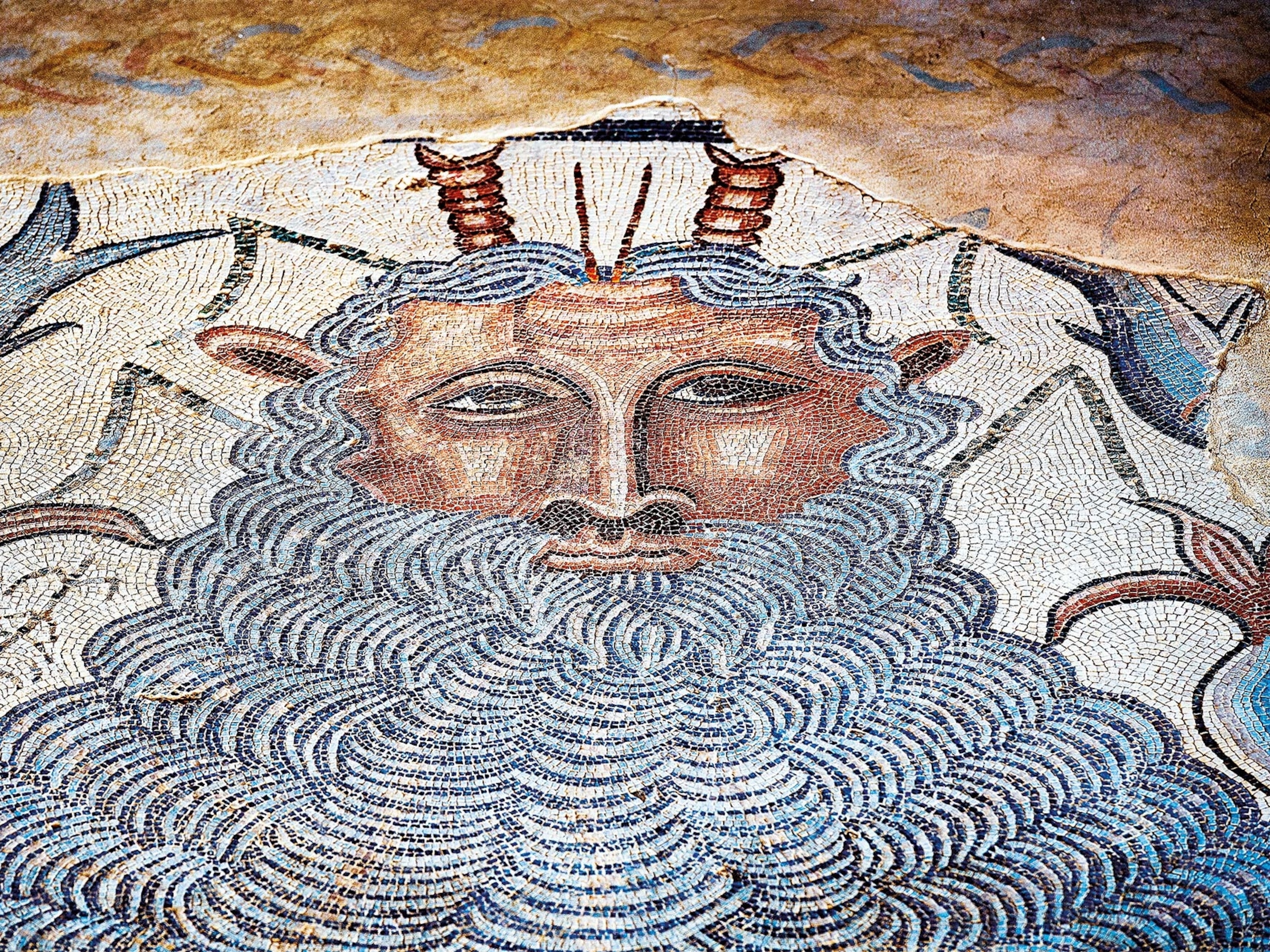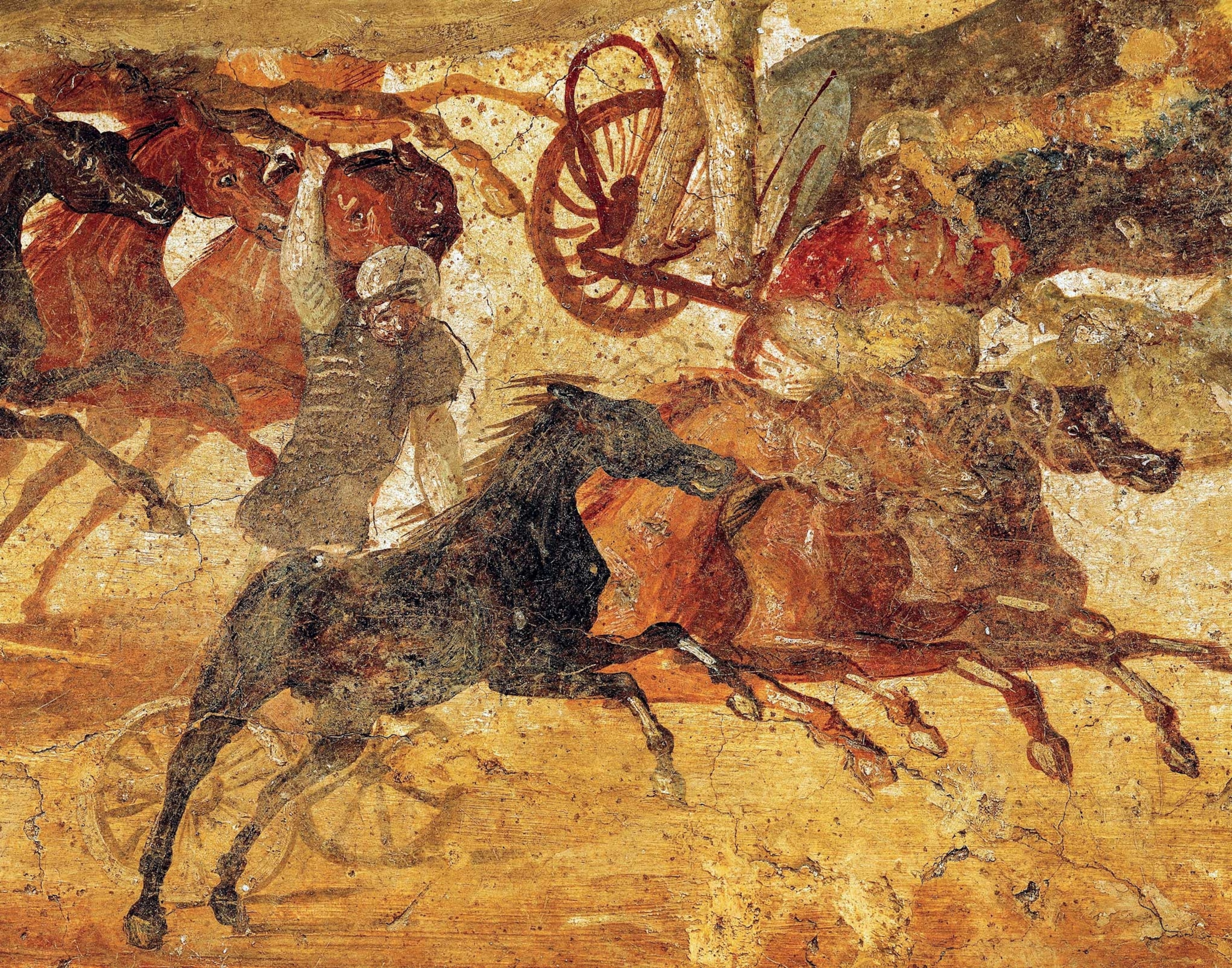
Fast and furious: Chariot races in the Roman Empire
Constantinople‘s favorite spectator sport, chariot races at the glorious Hippodrome were at the center of life in the sixth century A.D.
Perhaps the greatest action sequence caught on film is the chariot race from the 1959 Hollywood blockbuster Ben-Hur. Before a frenzied crowd of thousands, horse-drawn chariots hurtle around a track as each pilot tries to avoid catastrophic crashes to win the day. For all its artistic license, the movie’s creators were not exaggerating the danger of the races nor the excitement of the arena. If anything, the emotions on the big screen pale in comparison to the passions of ancient Romans.
Chariot racing stoked fanaticism in the Roman world, and fans flocked to see their favorites compete. The fervor of the races led to tensions that occasionally simmered over into full-scale revolt. From provincial outposts such as Jerusalem, the setting of Ben-Hur, to Rome—whose Circus Maximus was the biggest arena in the empire—chariot racing packed in the crowds with its spectacle. Even after Rome’s importance began to fade, the new eastern imperial power center, Constantinople, built a monumental racetrack, the Hippodrome. While not as large as Rome’s Circus Maximus, it was still huge; historians disagree on its capacity, putting it somewhere between 30,000 and 100,000.
A Day at the Roman Races

The typical events at the Hippodrome promised nonstop spectacle and excitement for the fans of chariot racing. The number of races might range from eight to 25 in the course of a day, giving viewers the chance to see many of their favorite racers risk their lives. In the quest for victory a charioteer faced plenty of hideous fates: crashing his vehicle, becoming tangled in the reins and being throttled or maimed; or falling out and being crushed under stampeding horses’ hooves. The number of laps varied, but a seven-lap race could last as long as 15 minutes. There were several categories of race, typically broken up by the age of the driver: teenagers, charioteers in their early 20s, and very experienced pilots ages mid-20s and older. Bets were placed on which team or driver would win, and although the charioteering was top billing, there was plenty of activity to keep the crowd amused between races: Food vendors, acrobats, dancers, and animal tamers, all were a part of the noisy scene at the Hippodrome.
The Hippodrome
Constantine the Great, the first Roman emperor to convert to Christianity, took interest in charioteering. After A.D. 330, the year he re-founded Byzantium as Constantinople, he remodeled the Hippodrome to make it one of the capital’s most prominent buildings. The Hippodrome was one of the four buildings framing the central square of Constantinople. If the Senate, the imperial palace, and the Christian cathedral stood for the legislative, executive, and religious power of the eastern Roman Empire, the Hippodrome represented the power of entertainment. To the public, circuses were no less important than bread, and the fortunes of their favorites were followed obsessively by a huge fan base.
Races attracted huge crowds. On race days, people would arrive at the Hippodrome hours early, sometimes sleeping in the stands to save their seats. Earlier in Roman history, it was common for an arena to have four chariot teams, but by the later Byzantine period, the typical number was two—in the case of Constantinople, the Blues and the Greens.
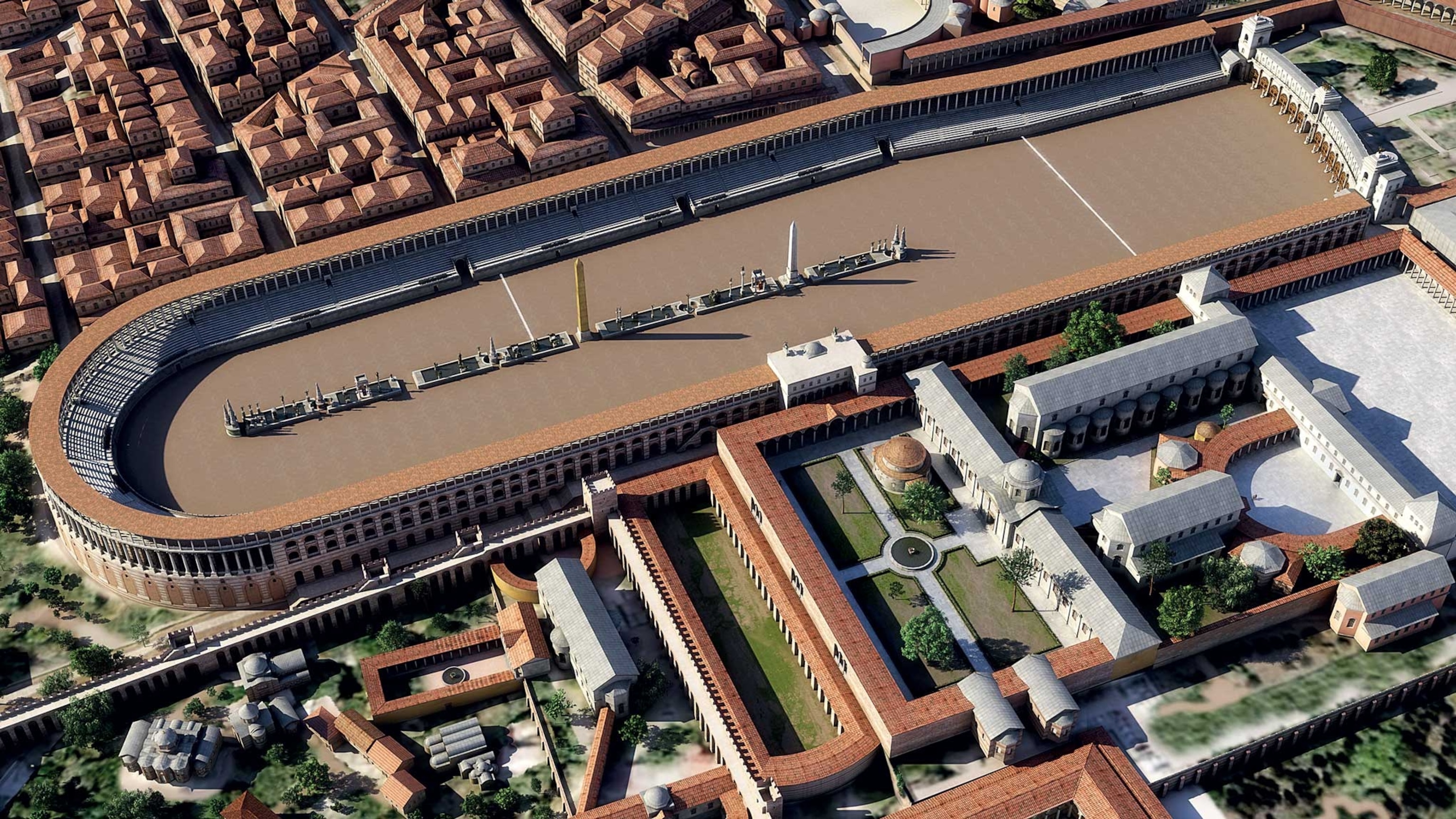
Byzantine charioteers were idolized by tens of thousands of fans. These heroes piloted the quadriga, a chariot drawn by four horses. Often traveling at highly dangerous speeds, each chariot raced around a track about 150 feet wide. Shorter races lasted about 15 minutes, marked in laps around the central spina (spine) of the racecourse. The Hippodrome’s spina was crowned with the ancient Egyptian Thutmose obelisk, the so-called Constantine Obelisk, and a bronze pillar composed of three entwined snakes that had been looted from Delphi. The most dangerous moment was the sharp, full turn at each end of the spina, a maneuver that involved slowing the horses, but which was still executed at nearly 20 miles an hour. These brutal contests were often the scene of smashups and horrific injuries—but also opportunities for glory and gain.
Haloed with an aura of skill, speed, and danger, charioteers were the professional athletes of their day. One of the most famous was Porphyrius, an African-born pilot who took the sport to new heights of popularity in its sixth-century heyday. Accounts describe Porphyrius, who started in provincial arenas before working in Constantinople, as oozing with divine charisma, dashing good looks, and amazing athletic abilities.
Political Races
Chariot racing had long been intimately linked with power and violence. Since the time of Constantine, the emperors took a close interest in channeling the passion of the races and trying—not always successfully—to turn it to their political advantage, usually by funding it from their own pocket. The Hippodrome of Constantinople had always had a political dimension, not least because of its size. The emperor presided over races with his consort and family in the kathísma, a kind of imperial private box, accessed directly from the neighboring palace.
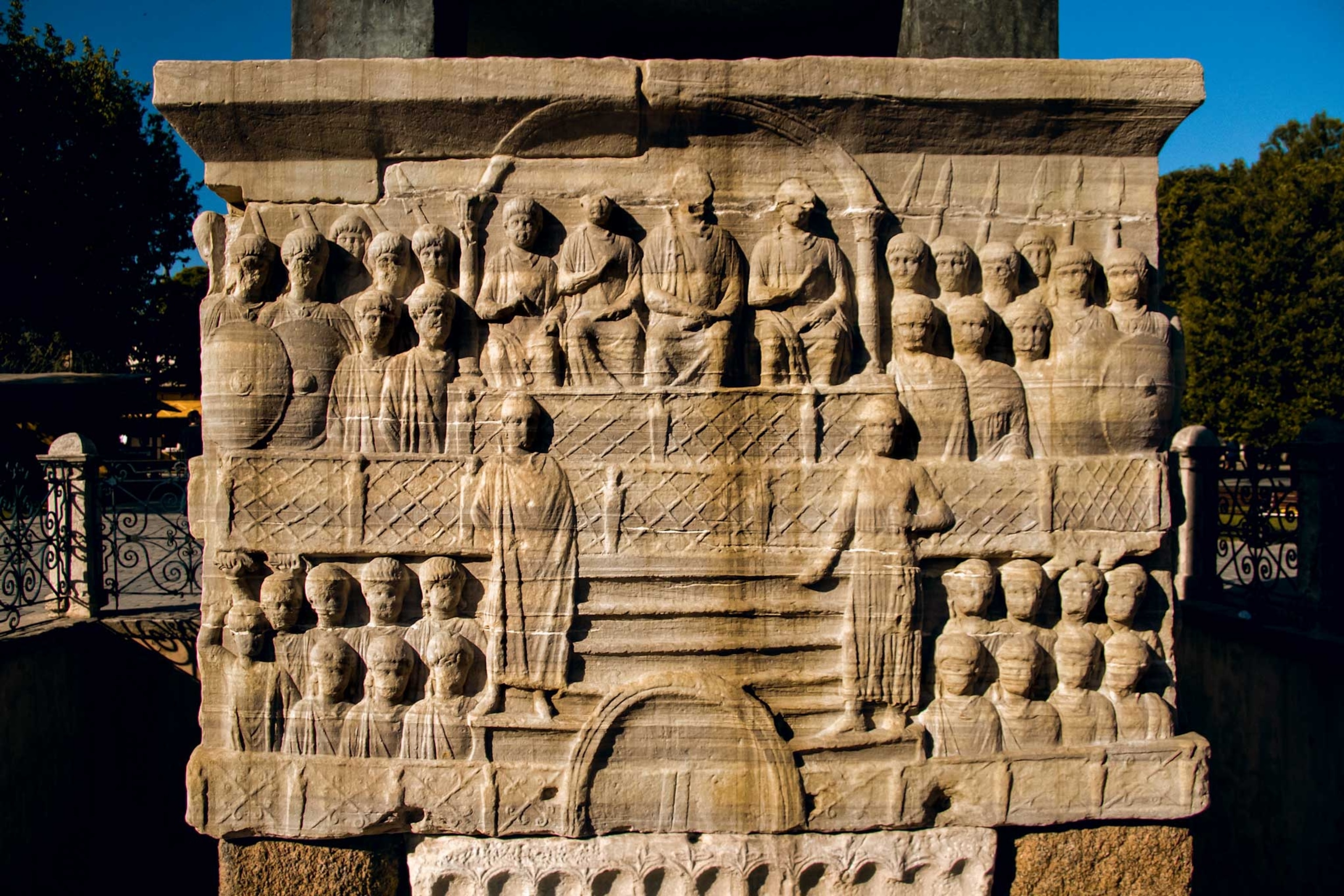
For Empress Theodora, wife and co-ruler with Emperor Justinian in the mid-sixth century, the link to the Hippodrome was political as well as personal. Theodora had been born not into nobility but into a circus family. Her mother was most likely an acrobat, and her father was a bear keeper for the Greens. Her father died unexpectedly, and when her widowed mother remarried, she asked the Greens to employ her new husband. They denied her request, but the Blues were happy to take him on. From that moment, Theodora’s allegiance switched from the Greens to the Blues, the favored team of her future husband, Justinian.
Much of what is known of Theodora comes from the Secret History written by Procopius of Caesarea. He described how the unlikely Theodora captured the heart of Justinian and rose to become his bride. Intelligent and beautiful, she also became one of Justinian’s most trusted political advisers.
In A.D. 532 tensions in Constantinople were running high, especially between the Blues and Greens. “Better to be a Pagan than a Blue!” was an insult hurled by the Greens at their rivals in this period. There was also growing, citywide rage at high taxes levied on them to pay for Justinian’s recent military victories. When fighting between the Greens and Blues broke out at the Hippodrome, Justinian fretted that public order was breaking down. Ditching his allegiance to the Blues, he had seven members from both teams rounded up and hanged as a show of his strength.
The execution was botched, and two of the condemned—one Blue and one Green—survived. They were taken by the crowd to a church and given sanctuary. Many believed the two had been spared by God and rallied behind the condemned. Even the two teams at last found common cause. At the next chariot race they turned their combined fury on Justinian and Theodora with the cry of “Nika! Nika!—Conquer! Conquer!”
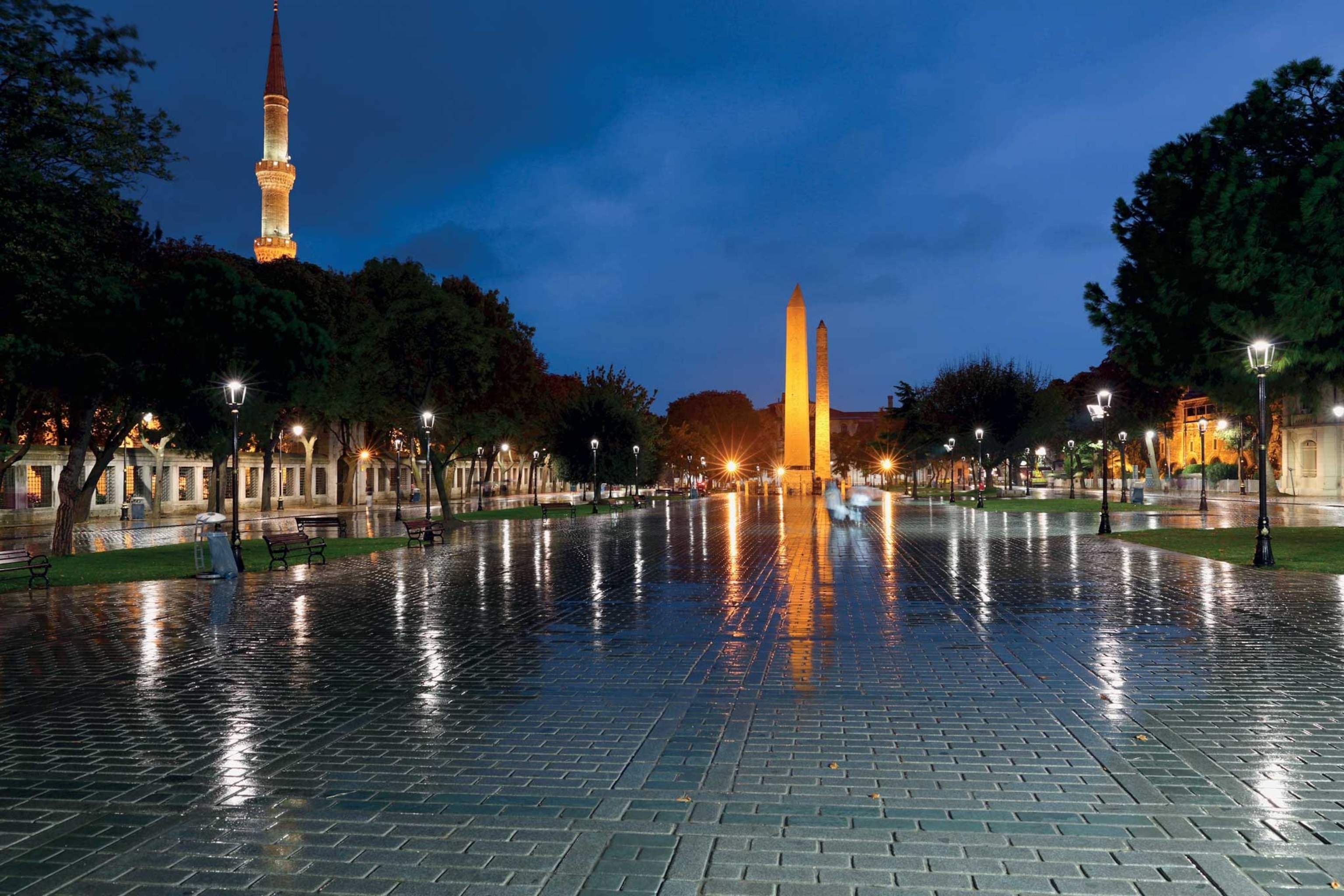
Days of looting ensued as the Nika riot spread. Alarmed, Justinian agreed to sack his minister responsible for taxation, but the crowds were not satisfied. They wanted Justinian to step down, and they would crown a new emperor.
Frightened, Justinian considered fleeing, but Theodora stood firm, saying she would rather die with her boots on—or as she expressed it: “[C]onsider first whether, when you reach safety, you will regret that you did not choose death in preference. As for me, I stand by the ancient saying: that imperial purple makes the noblest shroud.” Emboldened, Justinian sent to the Hippodrome his troops, who cut the people to pieces and left as many as 30,000 men, Greens and Blues alike, dead on the arena floor.
Game Over
Justinian and Theodora had no trouble shoring up their power after the Nika revolt, which marked the high-water mark of Byzantine chariot races. A century later, the power and influence of the teams, as well as the sport’s popularity, had declined. Distracted by wars with the Persian Sasanids, and later the Arab Muslims, Constantinople’s rulers found it harder and harder to finance the extravaganzas in the Hippodrome.
When mutinying Christian armies sacked Constantinople during the Fourth Crusade in the early years of the 1200s, the gilded bronze chariot group that topped the monumental entrance was carted off as booty to Venice. What remains of the Hippodrome in Istanbul, Turkey, is a peaceful park, a marked contrast from the frenzy of a day at the races of the past.

